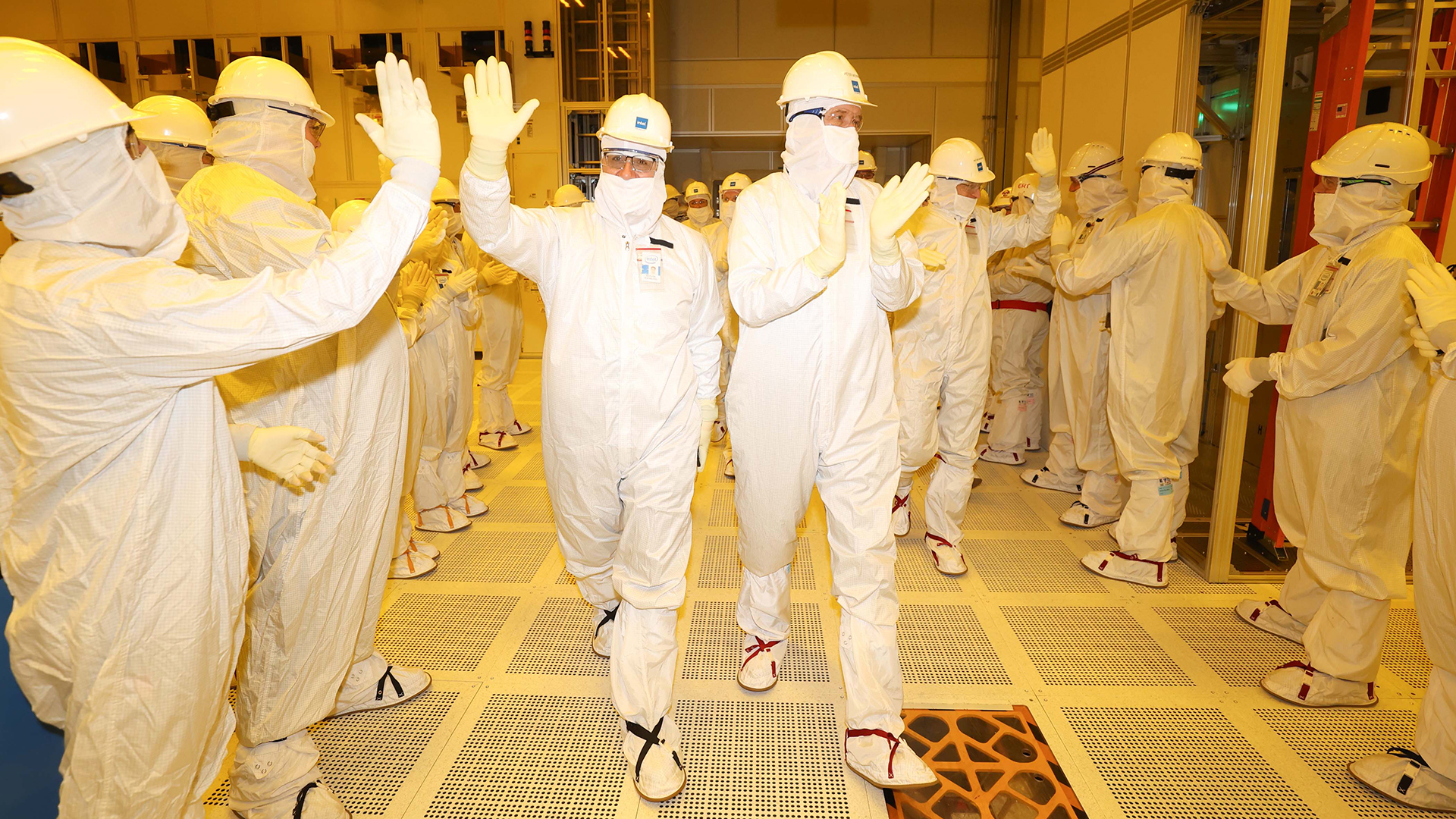
NVIDIA's Chief Financial Officer Colette Kress has once again teased a potential partnership with Intel Foundry Services for next-gen chip production.
NVIDIA Calls TSMC A Great Partner, Samsung Still In Use To This Day & Intel A Potential "Third" Foundry Partner
During the most recent UBS Global Technology Conference, NVIDIA's CFO was asked if they would consider going to Intel as a Foundry partner for the production of their next-gen chips. To this, the CFO showed very positive remarks based on their statement.
The bulk of NVIDIA's Data Center GPUs for AI/HPC and Gaming chips are currently being produced by TSMC but just one generation ago, Samsung was the one building NVIDIA's Gaming GPUs. The Samsung Fabs were responsible for the development of Ampere, NVIDIA's GPU family that powers the GeForce RTX 30 "Gaming" graphics cards. However, as extensively reported in our previous coverage, Samsung is aiming to oversee a much more crucial role in the "nourishing" of NVIDIA's data center revenue for the coming years, since the firm has reached a position that has made it a close partner to Team Green.

It is expected that TSMC will retain its key partnership with NVIDIA for the production of Hopper H200 and Blackwell B100 GPUs, retaining its AI market share momentum while Samsung will be available in case additional orders are required. NVIDIA also aims to have a rich ecosystem of foundry partners and is open to using a third one (referring to Intel). Here is what NVIDIA had to say:
I think there are a lot of great foundry partners. TSMC has been a great one. As you know, we also use Samsung today. Would we love a third one? Sure. We would love a third one. And that takes a work of what are they interested in terms of the services. Keep in mind, there is other ones that may come to the U.S. TSMC in the U.S. may be an option for us as well. Not necessarily different, but again in terms of the different region. Nothing that stops us from potentially adding another foundry.
Colette Kress (NVIDIA CFO) at UBS Global Technology Conference
Samsung Foundry has framed its offerings in a way that has compelled team green to increase its order placement volumes to the firm, given that not only has the Korean giant refined its processes, but has continuously collaborated with Team Green for the past two years to become a reliable supplier.
The edge Samsung has over other foundry competitors is its extensive line of equipment that can cater to semiconductor, memory, and packaging stages, which not only provides NVIDIA a "hybrid partner" but Samsung could potentially give itself a boost if the company offers competitive pricing and delivery times.

Industry sources have mentioned the name of Intel as a foundry partner. Even NVIDIA's CEO, Jensen Huang hinted at using Intel's Foundries for upcoming chips. A deal with NVIDIA would definitely be a major deal for Intel as the company aims to gain more IFS partners in the future.
Having US-based Foundry partners will also be beneficial for NVIDIA and other chip giants such as AMD and even Intel which relies on TSMC for the production of certain IPs in the chips. But NVIDIA CEO believes that the US is still decades away from supply chain independence and bringing TSMC and other major fabs to the US will be the first major step in achieving this goal.

NVIDIA Once Again Teases Potential Deal With Intel: Says Would Love To Have A Third Foundry Partner Besides TSMC & Samsung
NVIDIA Chief Financial Officer Colette Kress has once again teased a potential partnership with Intel Foundry Services for next-gen chips.

